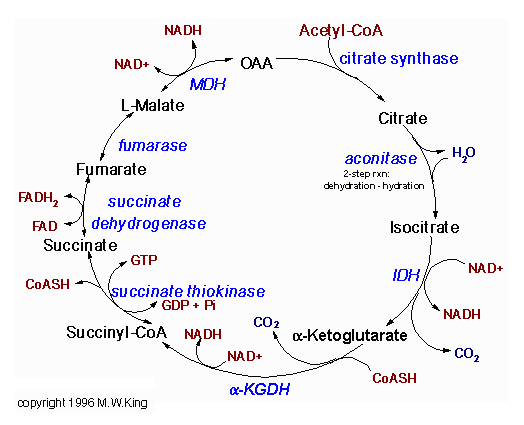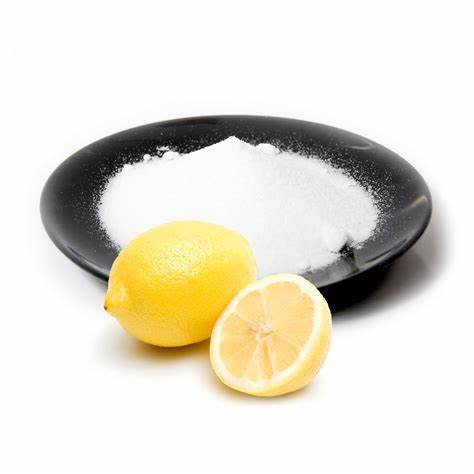Table of Contents
ToggleThe world of biochemistry is filled with fascinating interconnections, where seemingly unrelated compounds and processes are intricately linked. One such intriguing relationship exists between the citric acid cycle and citric acid itself. While citric acid is a well-known organic acid found in fruits and commonly used in food and beverages, its connection to the citric acid cycle, also known as the Krebs cycle or tricarboxylic acid (TCA) cycle, is less commonly understood. In this article, we will explore the relationship between the citric acid cycle and citric acid, shedding light on their interdependence and significance in cellular metabolism.
Understanding the Citric Acid Cycle:

The citric acid cycle was discovered by the British biochemist Hans A. Crebs, so it is also known as the “Krebs cycle” or “tricarboxylic acid ycle”; This discovery won him the 1953 Nobel Prize in Physiology and Medicine.
The citric acid cycle is a vital metabolic pathway occurring within the mitochondria of eukaryotic cells and some prokaryotic organisms. It serves as a central hub in cellular respiration, playing a key role in the generation of energy-rich molecules, particularly adenosine triphosphate (ATP). The cycle involves a series of enzymatic reactions that oxidize acetyl-CoA, derived from carbohydrates, fats, and proteins, to produce energy and other important metabolites.
Simply put, the so-called “citric acid cycle” is to eat food, after digestion by various organs of the body, decompose various nutrients into different amino acids, which must be added to citric acid to oxidize and produce calories (energy); During the combustion process, some nutrients are converted into other acids, producing carbon dioxide and water, which are metabolized outside the body. Since the whole process requires the participation of citric acid to complete a cycle, it is called the “citric acid cycle”.
The Role of Citric Acid:

Citric acid, as its name suggests, plays a crucial role in initiating the citric acid cycle. It serves as the starting compound for the cycle, acting as an intermediate molecule that is continuously regenerated during the cycle’s progression. In the first step of the cycle, citric acid (also known as citrate) is formed when acetyl-CoA combines with oxaloacetate, a four-carbon molecule. This reaction, catalyzed by the enzyme citrate synthase, yields citric acid, setting the stage for the subsequent reactions of the cycle.
The Citric Acid Cycle in Action:
As far as humans are concerned, we eat a variety of different foods every day, enter the digestive system, and after decomposition and absorption, the three major nutrients (protein, carbohydrate and fat) will automatically return to the team. For example, after digestion, protein is broken down into quinolic acid and aspartic acid; Carbohydrates are broken down into charred grape acid; Lipids are broken down into fatty acids. These small nutrients are absorbed by the small intestine and then transported from the blood to the cells of various tissues and systems of the body as a source of energy and heat. Throughout the process of digestion and absorption, citric acid must be involved in order to carry out oxidation and produce energy at the same time.

In the oxidation process, aspartic acid and fatty acids produced after protein digestion and decomposition will further combine with oxaloacetic acid into the lemon cycle; After that, citric acid is converted into aconitum acid and isocitric acid, and carbon dioxide, heat and water are produced in each conversion process. At the same time, glutamic acid also binds to a ketoglutaric acid and enters the cycle; Succinic acid becomes fumarate, malic acid, and in the conversion process to produce heat, carbon dioxide and water, in addition to heat energy for physical activity, water and carbon dioxide are excreted with feces, urine and sweat and other ways to complete a citric acid cycle.
Conclusion:
Whether the citric acid cycle is smooth is closely related to human health; If the diet is not balanced, the nutrients are insufficient, or excessive fatigue, excessive physical exertion, and overdraft, then many nutrients cannot be broken down into amino acids and used by the body; Without access to the citric acid cycle, nutrients cannot be effectively burned, producing energy and waste0, and these incompletely burned molecules also form “pyrogenic grape acid”, which is combined with hydrogen to form lactic acid. A large amount of lactic acid accumulates in the muscles can make people feel sore, neuralgia, tired and salty; If a large amount of lactic acid accumulates in the blood, the constitution will be acidic, which is often called acidic constitution, which is more likely to suffer from chronic diseases or worsen symptoms.
Therefore, as long as the citric acid cycle is kept normal, the human body can always maintain health, and proper intake of citric acid is still very beneficial to the body.


